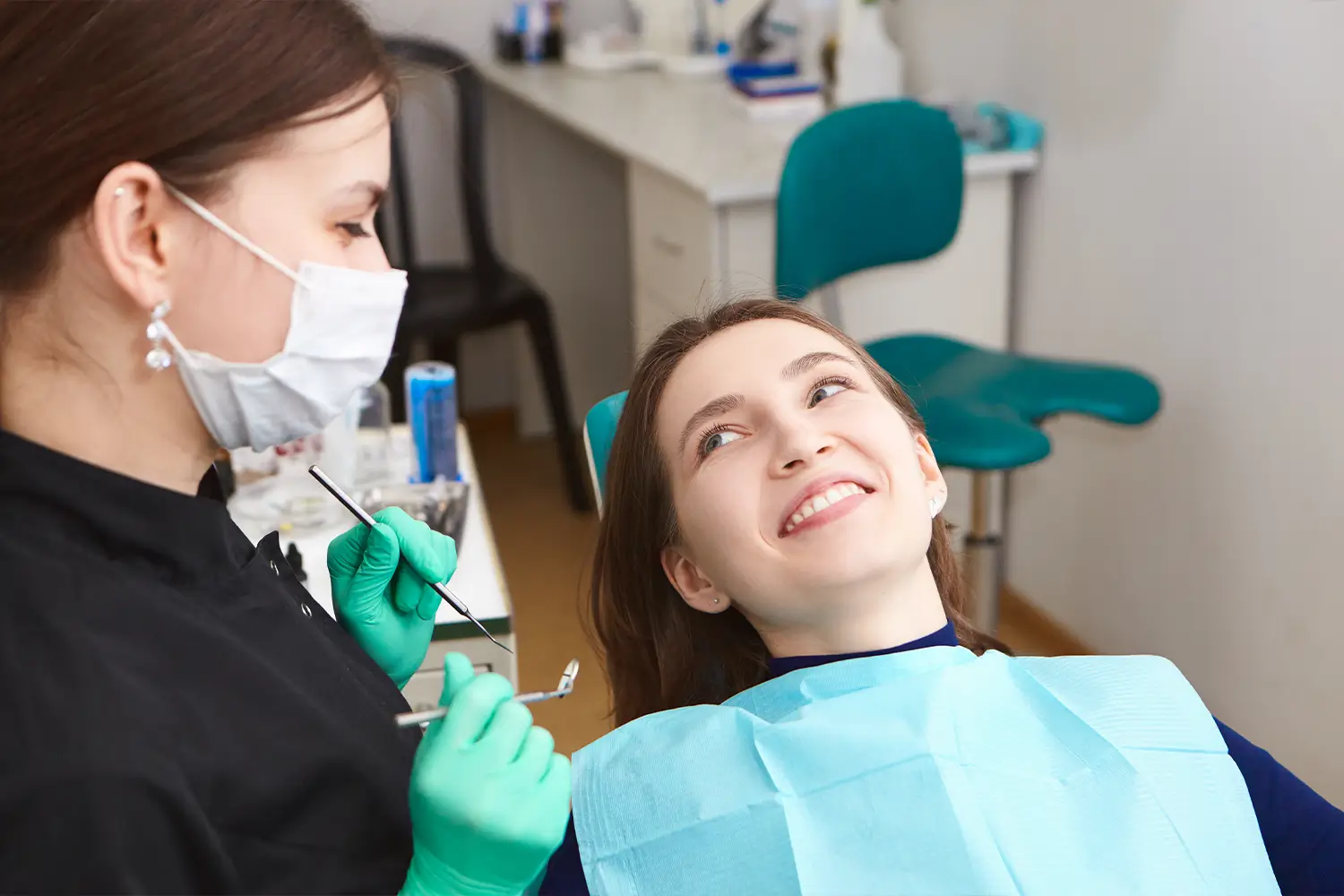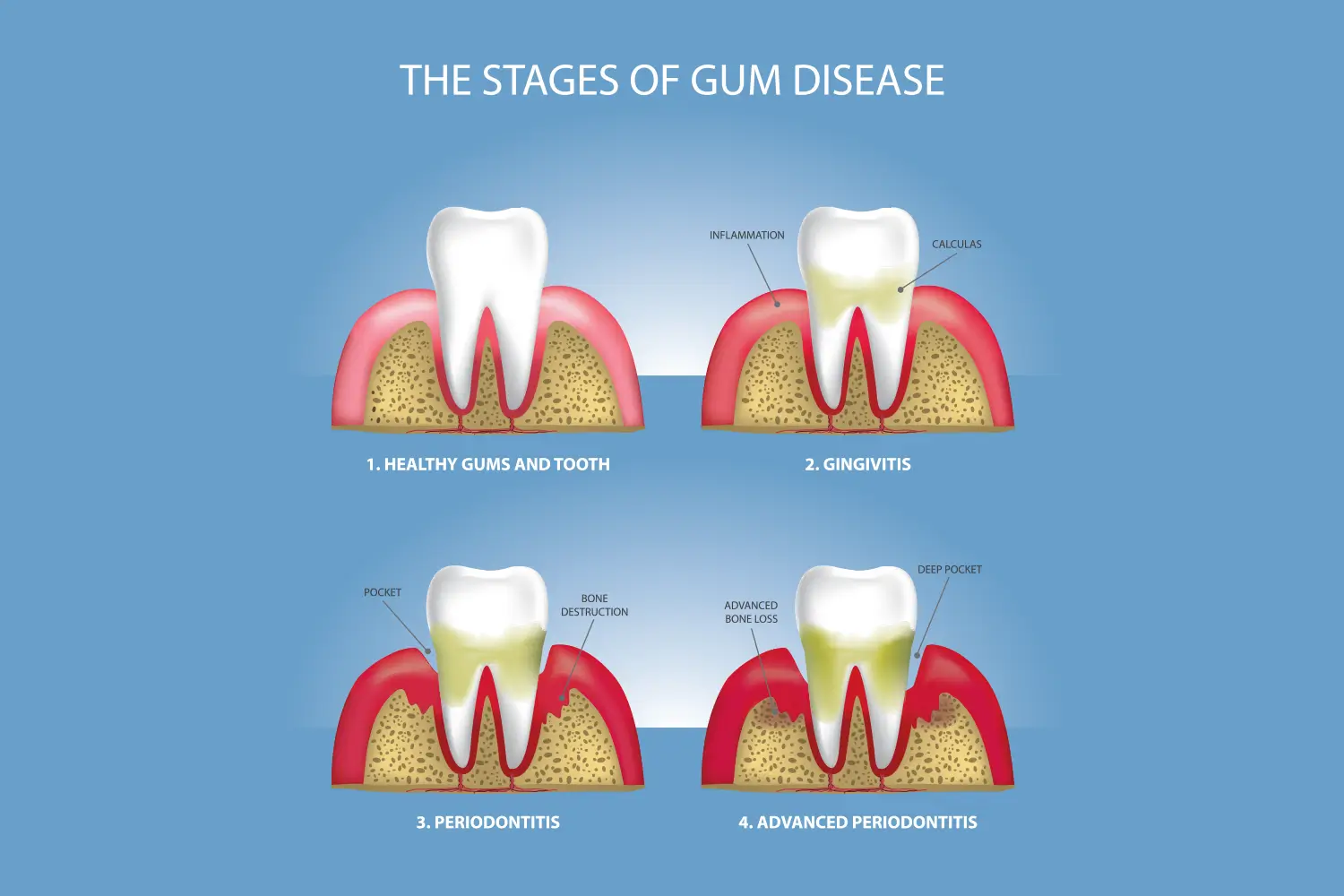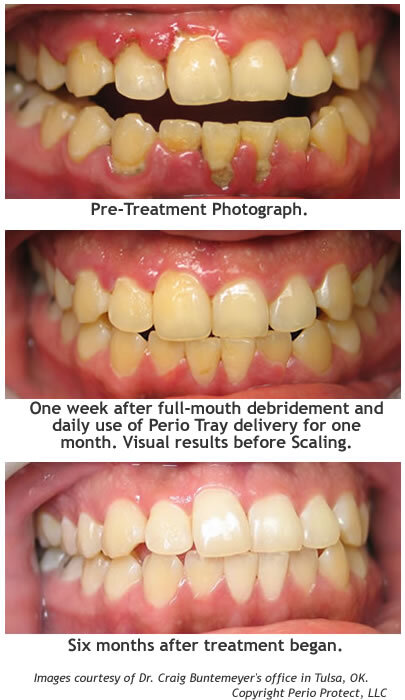Non-Surgical Periodontics
Our goal with non-surgical periodontal (gum) treatment at Family and Cosmetic Dentistry of Kokomo is to provide you with an alternative to conventional gum therapy. When a patient presents with periodontal disease we have many ways to get your teeth healthy again. We start with a thorough exam followed by home care instructions. Home care is the single most important step in treating periodontal disease. The secret to preventing tooth loss is to brush in the morning when you awake and in the evening before bed. Also, flossing every night before bed is critical.
We generally begin treatment with a very detailed type of cleaning called Scaling and Root Planing. This procedure is usually accomplished with either a super strong topical anesthetic gel or traditional numbing. We have a product called Cetacaine which replaces traditional numbing. Most patients find it very comfortable. Commonly, we place antibiotics directly in the infected areas and may even use a laser to decontaminate the periodontal pocket. This therapy takes a few visits to complete. We also have medications such as prescription mouthwashes, toothpastes, and oral antibiotics which increase the effectiveness of our therapy. We have many devices available to accomplish excellent oral hygiene at home such as the Sonicare Tooth Brush, the Water-Flosser or Water Pik, the Braun Oral-B Brush, and Butler tongue scrapers. We always encourage patients to have regular dental check-ups 3-4 times per year and live a healthy life style to maintain a state of excellent oral health.


What is Periodontal Disease?
Periodontal disease is an infection of the tissues that support your teeth. Your gum tissue is not attached to the teeth as high as it may seem. There is a very shallow v-shaped crevice called a sulcus between the tooth and gums. Periodontal diseases attack just below the gum line in the sulcus, where they cause the attachment of the tooth and its supporting tissues to break down. As the tissues are damaged, the sulcus develops into a pocket: generally, the more severe the disease, the greater the depth of the pocket. Periodontal diseases are classified according to the severity of the disease. The two major stages are gingivitis and periodontitis. Gingivitis is a milder and reversible form of periodontal disease that only affects the gums. Gingivitis may lead to more serious, destructive forms of periodontal disease called periodontitis.
It is possible to have periodontal disease and have no warning signs.
That is one reason why regular dental checkups and periodontal examinations are very important. Treatment methods depend upon the type of disease and how far the condition has progressed. Good oral hygiene at home is essential to help keep periodontal disease from becoming more serious or recurring. You don’t have to lose teeth to periodontal disease. Brush, clean between your teeth, eat a balanced diet, and schedule regular dental visits for a lifetime of healthy smiles.
Some factors increase the risk of developing periodontal disease:
- Tobacco smoking or chewing
- Systemic diseases such as diabetes
- Some types of medication such as steroids, some types of anti-epilepsy drugs, cancer therapy drugs, some calcium channel blockers and oral contraceptives
- Bridges that no longer fit properly
- Crooked teeth
- Fillings that have become defective
- Pregnancy or use of oral contraceptives
Several warning signs that can signal a problem:
- Gums that bleed easily
- Red, swollen, tender gums
- Gums that have pulled away from the teeth
- Persistent bad breath or bad taste
- Permanent teeth that are loose or separating
- Any change in the way your teeth fit together when you bite
- Any change in the fit of partial denture
Definitions
Normal, healthy gums
Healthy gums and bone anchor teeth firmly in place.
Periodontitis
Unremoved, plaque hardens into calculus (tartar). As plaque and calculus continue to build up, the gums begin to recede pull away) from the teeth, and pockets form between the teeth and gums.
Advanced periodontitis
The gums recede farther, destroying more bone and the periodontal ligament. Teeth – even healthy teeth – may become loose and need to be extracted.


How can I prevent periodontal (gum) disease?
The good news is that you can help prevent periodontal (gum) disease by taking good care of your teeth every day and having regular dental checkups. Here’s how to keep your teeth and gums healthy:
- Brush your teeth well twice a day. This removes the film of bacteria from the teeth. Be sure to use a soft-bristled toothbrush that is in good condition. Toothpastes and mouth rinses containing fluoride strengthen the teeth and help prevent decay. Choose products that bear the American Dental Association Seal of Acceptance, your assurance that they have met the ADA’s standards for safety and effectiveness. The ADA reviews all advertising claims for any product bearing the Seal. The Seal on a product is an assurance for consumers and dentists against misleading or untrue statements concerning a product’s safety and effectiveness.
- Clean between your teeth every day. Cleaning between your teeth with floss or inter-dental cleaners removes bacteria and food particles from between the teeth, where a toothbrush can’t reach. Early periodontal (gum) disease can often be reversed by daily brushing and flossing. If you use inter-dental cleaners, ask Dr. Melissa how to use them properly, to avoid injuring your gums.
- Eat a balanced diet. Choose a variety of foods from the basic food groups, such as breads, cereals and other grain products; fruits; vegetables; meat, poultry and fish; and dairy products, such as milk, cheese and yogurt. Limit between-meal snacks.
- Visit us regularly. It is important to have regular dental check-ups, and professional cleaning is essential to prevent periodontal disease.
- The Perio Tray® by Perio Protect: Non-Invasive Therapy for Gum Disease
Gum disease is caused by a bacterial infection that is hidden below your gums. Dental cleanings can effectively treat the bacteria, but when you return home the cycle often continues. Bacterial cells grow back in just hours after a cleaning, and toothbrush, rinse and floss can’t reach deep enough to address the infection at home.
The Perio Tray by Perio Protect gently applies medication deep under the gums to fight the infections. You use it at home for just minutes each day. The Tray is comfortable, flexible, and custom-fit precisely for your mouth.